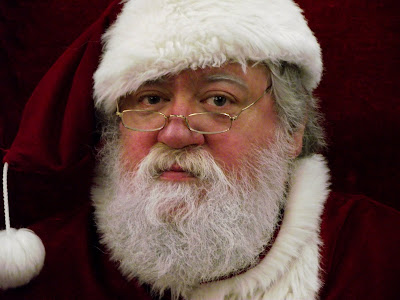 One of the things I love most about this country is that, over my lifetime, we have become an increasingly multicultural society. Gone are the days when I could imagine that I could imagine an “average Canadian”. And the other day I was delighted to hear someone list Swedish meatballs among their favourite Canadian foods. But it’s a good wind that blows no ill and, on Christmas Eve, I had occasion to witness another episode of the annual Holiday Season drama “What to say? What to say?”.
One of the things I love most about this country is that, over my lifetime, we have become an increasingly multicultural society. Gone are the days when I could imagine that I could imagine an “average Canadian”. And the other day I was delighted to hear someone list Swedish meatballs among their favourite Canadian foods. But it’s a good wind that blows no ill and, on Christmas Eve, I had occasion to witness another episode of the annual Holiday Season drama “What to say? What to say?”.
Now I know some of my fellow Christians take this matter very seriously, as do some of my non Christian friends. The former suspect that “Happy Holidays” and “Seasons Greetings” are sinister plots to do away with Christianity, while the latter believe “Merry Christmas” is a deliberate or, at best, ignorant insult to all those who don’t celebrate Christmas. Personally, however, I think the whole debate is a bass ackwards approach to a problem that shouldn’t be a problem at all in a multicultural world.
In twenty-first century Canada there’s a whole host of festivals being celebrated toward the end of the calendar year: Bodhi Day (Buddhist), Winter Solstice (various ethnic and religious), Dōngzhì Festival (Chinese), Diwali (Hindu), Kwanzaa (African American), Christmas (Christian and post Christian), Pancha Ganapati (Hindu), Hanukkah (Jewish), Yalda (Persian). And if there are any ancient Romans among us they will be enjoying Saturnalia.
Of course we can opt to withdraw, as we often do in awkward social situations, but why light our lamps and put them under bowls, when we could put them on stands and give light to everyone in the house? (Matt 5:15) In other words, wouldn’t it be nice if we encouraged everyone to step up and share what they have with everyone else?
When I say “Merry Christmas” I need not assume the person I’m addressing is a Christian or of “Christian Heritage”, or even that they’re celebrating Christmas. I can simply be being inclusive, extending to them some of the joy that I’m experiencing. If a Jew were to wish me “Happy Hanukkah”, I need not be offended or feel he or she has failed to recognize my non Jewishness. I can, instead, be honoured to have been included in their festivities. And, even though I am obviously not of African descent, the same would apply to the African American who wished me a “Joyous Kwanzaa”.
What’s the point of being a multicultural nation if we keep it all to ourselves, or make it all so generic that it means nothing to anyone, or even everything to everyone? And just imagine living in a place where a common reply to “Merry Christmas” might be “Season’s Greetings”, “Happy Hanukkah”, “Good Diwali” or “Have a fun Yalda”, with no one taking any offence at all. I’m not trying to start an argument. It’s just a thought. So...
“Merry Christmas and Happy New Year”
because it’s Christmas and New Year to me.
What’s it to you?






